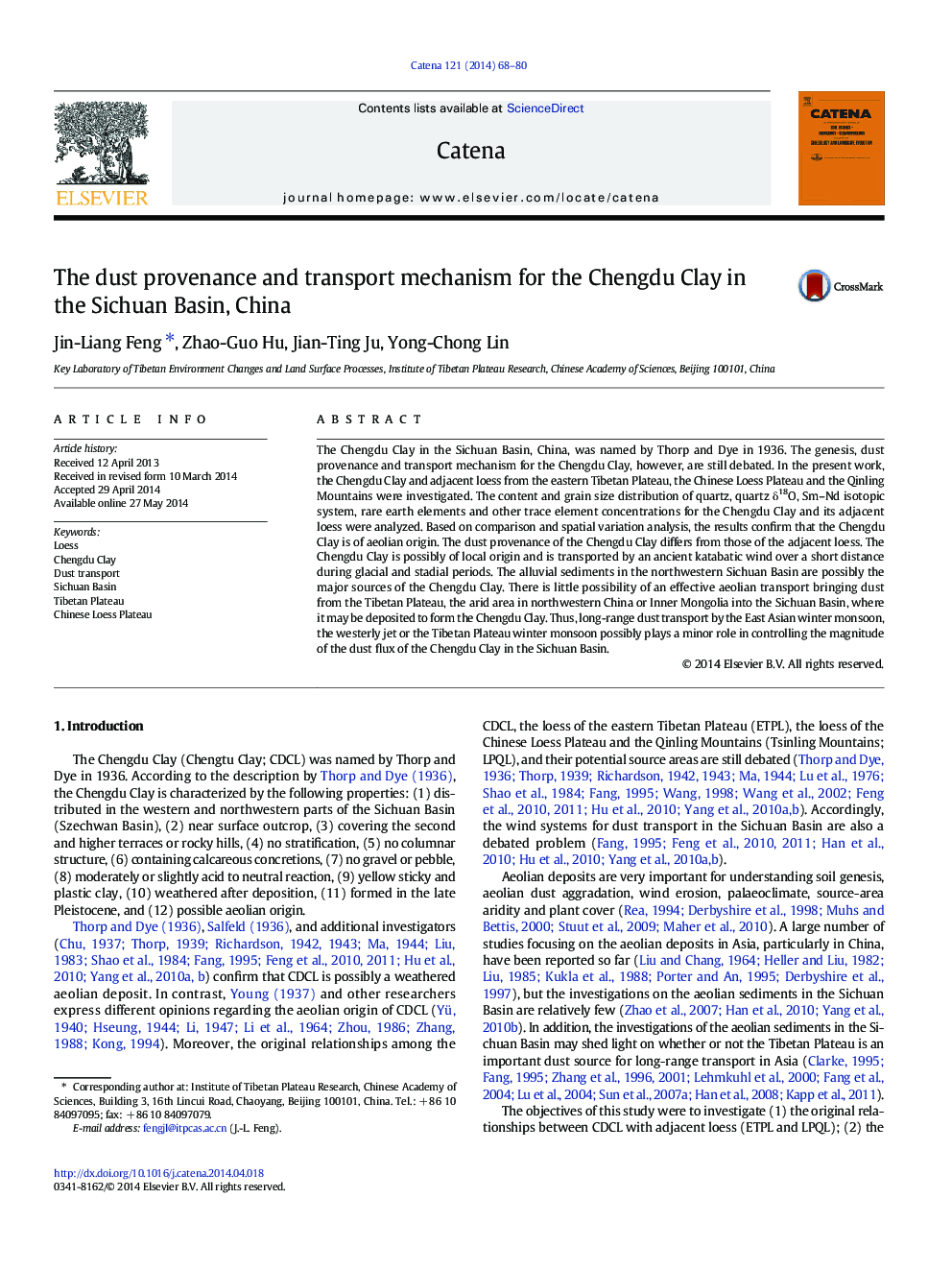| Article ID | Journal | Published Year | Pages | File Type |
|---|---|---|---|---|
| 4571303 | CATENA | 2014 | 13 Pages |
•The Chengdu Clay in the Sichuan Basin, China, is of local aeolian origin.•The aeolian dust is transported by an ancient katabatic wind.•The long-range-transported dust plays a minor role in the origin of the Chengdu Clay.
The Chengdu Clay in the Sichuan Basin, China, was named by Thorp and Dye in 1936. The genesis, dust provenance and transport mechanism for the Chengdu Clay, however, are still debated. In the present work, the Chengdu Clay and adjacent loess from the eastern Tibetan Plateau, the Chinese Loess Plateau and the Qinling Mountains were investigated. The content and grain size distribution of quartz, quartz δ18O, Sm–Nd isotopic system, rare earth elements and other trace element concentrations for the Chengdu Clay and its adjacent loess were analyzed. Based on comparison and spatial variation analysis, the results confirm that the Chengdu Clay is of aeolian origin. The dust provenance of the Chengdu Clay differs from those of the adjacent loess. The Chengdu Clay is possibly of local origin and is transported by an ancient katabatic wind over a short distance during glacial and stadial periods. The alluvial sediments in the northwestern Sichuan Basin are possibly the major sources of the Chengdu Clay. There is little possibility of an effective aeolian transport bringing dust from the Tibetan Plateau, the arid area in northwestern China or Inner Mongolia into the Sichuan Basin, where it may be deposited to form the Chengdu Clay. Thus, long-range dust transport by the East Asian winter monsoon, the westerly jet or the Tibetan Plateau winter monsoon possibly plays a minor role in controlling the magnitude of the dust flux of the Chengdu Clay in the Sichuan Basin.
